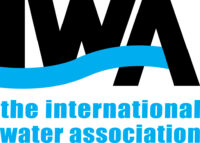At my kitchen table I sat when I received the invitation to be on a panel about Gender Matters: Organisational Implementation and Capacity Development during the UNESCO-IHE Delft Capacity Development Symposium (Thursday 28 May 2 pm CEST). To be honest I was both surprised and flattered by the invitation. The question that started to run through my mind: “Do I have enough expertise knowledge on gender in the water sector?”
I looked at my partner feeding our youngest whilst entertaining our eldest boy with his favourite toy. I realised how lucky I am to be in a country where a woman who is passionate to have a career in water can follow her professional interest and is provided with equal opportunities to help her realise this.
Not everyone has those opportunities! When I conducted the IWA study on gender diversity in the water sector (IWA2016) I spoke to female students in Zambia that had received significant resistance from their families to take on a technical study. As a matter of fact, we found that 17% of workers in water sector in developing countries were female and those who are, are mostly working in non-technical fields (IWA2014). The investigation following – IWA’s on Women Professionals in Urban Water presented in “The Untapped Resource: Gender and Diversity in the Water Workforce”- showed the significant barriers for entering the water sector (both from sectoral and social norms point of view) and the missing enabling environment to stay in the sector.
I realised, I do at least have a strong opinion to share with others in the water sector! So I accepted the invitation!
The Breaking Barriers report from the World Bank released in 2019 supported our findings that there is a lack of women in technical and managerial positions in water utilities. However, the sector is making progress towards gender diversity in comparison to 20 years ago. I feel this is largely due to the diversification in positions with an increasing focus on combining technical with socio-environmental and economical solutions.
Whilst the sector is making progress, it has a harder time retaining the women (with higher exit rates) and there seem fewer opportunities for women to advance their positions all around the world. The World Bank report recommends measures at four levels: to attract, recruit, retain and advance.
Within IWA we push this forward in all we do. We have communities, committees, events and projects in which water professionals engage. A balanced membership is one of our strategic priorities and to support us achieving that IWA’s board adopted and implemented a diversity and transparency policy. And of course, the one that sets the example, our IWA President Diane D’Arras.
However, in practice achieving gender diversity remains a struggle. When I have to ensure a gender balanced panel, workshop, or committee, there is a relatively small pool of women I can draw on. At IWA we still strive however to identify female leaders, build the capacity of our young female members and recognise their contributions.
In the utilities that I investigated during the IWA project on Women Professionals in Urban Water, I saw that only in a few countries some gender focused measures were taken, which include bursary / internship programmes, quota of 25% female professional and committees that are in charge to deal with gender issues at the job and workforce (e.g. a bathroom with bins for disposing menstrual hygiene products, handling harassment cases).
The issue of course goes beyond the sector and links heavily to societal norms which is harder to influence and can only be changed in much longer term. Still, we did make the following recommendations for the sector and utilities moving forward:
- To establish a shared focus on improving education through policy, funding and industry interventions to combat a fundamental block to more women entering the water sector as professionals (e.g. role models; bursaries for females; internship or traineeships).
- To create opportunities for men and women to work together, provide access to training in gender concerns, organisations can promote gender-equal attitudes within the workspace.
- To engage facilitators who practice participatory methods designed to level the playing field to ensure that the voices of some are not muted whilst others are amplified.
- To provide and to accept support as no one sector can drive this change alone – Utilities need the support of Donor organisations and NGOs working with gender issues and development concerns. They are also in a position to facilitate increased co-operation, and forge partnerships.
- To engage the society at large which would benefit from committees and commissions that work on specific focus areas under the overarching theme of increasing the participation of women in the water sector: be this community liaison, donor focus, internship programmes or/and open day or showcasing achievements in the workforce.
I strongly support in particular the recommendation of using of role models in the sector for attracting, retaining and advancing women in the water sector. Examples in which the sector can make a difference is through female professionals presenting at schools, ensuring that the visuals shown throughout cities on water and working in water have females represented, recognising the role models through Awards, such as the IWA Women in Water Award and support capacity development of young (female) professionals, like our IWA Young Water Professionals programme (YWP) or our YWP affiliate programmes in which the IWA Specialist Groups committee members mentor young water professionals.
In addition to that, I feel that good facilitators are needed to transition towards a gender neutral workforce and a society in which everyone enjoys and lives equal opportunities. A manager that is an experienced facilitator can make the difference on the work floor; stimulating the experience of how a diverse workforce can achieve more together and ensuring that the equal access to advancement opportunities are reached. This will influence retention in the longer run, and this counts both for the organisation as for the IWA network!




